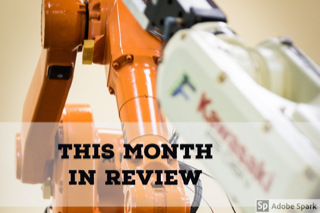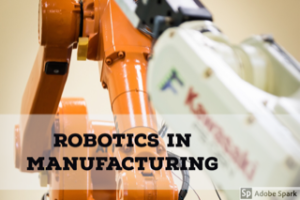The fortnight in review:

Over the past couple of weeks, we’ve discussed many things on the show. This is a recap of a few of our thoughts:
Honda’s Monkey

By Reg Mckenna (originally posted to Flickr as [1]) [CC BY 2.0 (https://creativecommons.org/licenses/by/2.0)], via Wikimedia Commons
Since the 1960s Honda has been cranking out the “Monkey” bike. Usually named a “Z”, as in Z50, the Monkey got it’s unusual moniker from the way people looked while riding them. Did you know that Honda Monkeys started out as amusement park rides? Imagine a small group of Monkeys bolted to a large spindle. Boys and girls could go around and around all day on the little bike. In the mid-1960s the parents could bring one home, since that’s when they hit the mass market.
The latest evolution of the beloved classic received an extreme makeover. The new Monkey is to the Grom what the CB1100 is to the Shadow.. a retro version based loosely on an existing platform. The new Monkey shares the Grom’s ABS (and resultant IMU) and most of the motor, but gets a completely new chassis and running gear. The dual-shock, chrome exhaust, round headlight, etc. all pay tribute to the Monkey and Trail bikes of the past. Coming in at $3,999 (+fees) it’s retro look betrays the modern price tag. ($700 more than a Grom)
Trump trump’s Harley-Davidson

By The White House from Washington, DC (President Trump’s First 100 Days: 15) [Public domain], via Wikimedia Commons
In an article on Bloomberg.com, H-D retail sales were reported to have been down for 13 of the last 14 quarters. To make things worse, President Trump has levied tariffs on steel and aluminum imports, which will cost the Motor Company $15-$20 million more than they were expecting to pay for imported raw materials. Add to that the EU’s retaliatory tariffs on Harley-Davidsons in particular, and you’ve got a recipe for disaster.
Bloomberg.com reported Levatich as saying that the Thailand plant was “..what’s necessary to access a very important market.” With Europe being the second largest region in Harley sales, it needs to continue selling to that market with product made outside the USA.
Asian markets are also crucial to H-D’s global growth, and adding $2000 to the cost of each bike will not fly in a market that’s used to cheap scooters and small displacement motorcycles.

created by Creative Riding using SparkPost
Robotics in manufacturing
A few automotive news sources have reported on the anticipated increase of robotics in manufacturing. The increased use of robotics is to help companies lower manufacturing costs and/or expand production efficiency in a global economy.
According to three experts in the robotics field, when sales of robotic technology increases, unemployment decreases. This is counterintuitive to how most humans feel, but reality hardly ever “feels” accurate. The truth, based on one report, is that up to 800 million jobs could be lost globally to robots. The flip side of that same report is that 890 million jobs could be created with the assistance of robotics, according to the authors. That’s 90 million jobs created by the use of robots or automation.
Regardless, implementing a robotic system allows companies to automate or assist with certain tasks. In turn, that frees up the employees to make new or better products or processes. That access to more resources leads to growth and more hiring, not to mention humans needed to maintain the robotic workforce.
The main point is that robots will likely not replace humans in any meaningful way. Instead they will supplement and assist humans, or they will automate menial tasks so that small and medium sized businesses can use employee talent to grow and develop.
The Future of Safety
On several shows, Chris Wiggins and I have talked about safety and the response by OEMs to produce vehicles that are, in my opinion, overly-safe.
The future is slated to be even more crazy with multiple technologies coming on board and being mandated through regulation. ABS is already mandatory on bikes over 125cc in most of Europe.
All the way back in episode 4, the topic was C-ITS, which is a very basic concept that defines not only how vehicles drive, but how the environment reacts to the actions of local traffic. It was a really general overview, but more and more actual systems are being on-boarded every year. Ducati announced the release of their system a few weeks ago:
One of these technologies is called C-V2X and it is a wireless communication system between road users such as cars, motorcycles, pedestrians, and bicycles and infrastructure. C-V2X technology is a key step toward 5G for automotive applications with direct communication between vehicles and their surroundings.- Ducati Press Release
In addition to C-ITS, or connected transportation, individual safety technology is also being tested on several different fronts. The Bosch thruster video above is but one example.
With the addition of the expanding IMU technology across most manufacturers, traction control, ride modes, throttle control, and even the Grom’s ABS are examples of once top-end features trickling down the product line-ups.
It’s only a matter of time before IMUs work in conjunction with the bike’s engine & braking characteristics, but also the gyro unit that some future motorcycles are sure to have equipped. Self-riding, lane-splitting, non-mechanical electric moto-units…mmmm, the future. I can’t wait.
Other topics included the Motorcycle Podcaster’s Challenge, Wiggins’ qualifying for the X-Games in Boise, we roasted a bike, gave gear advice, and of course we chatted about Flat Track.
Please go back and re-listen if any of those topics sound interesting to you!
-Cheers
